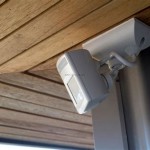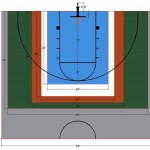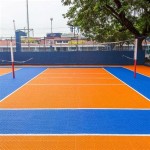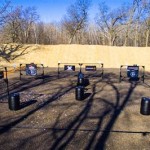Best Motion Lights For Outdoors: Enhancing Security and Safety
Outdoor motion lights are a valuable addition to any property, offering both increased security and enhanced safety. These lights automatically illuminate when motion is detected, deterring potential intruders and providing clear visibility in dark areas. The market offers a diverse range of motion lights, each with varying features, functionalities, and price points. Choosing the best motion lights for specific outdoor needs requires careful consideration of several factors, including light output, detection range, power source, and weather resistance.
This article provides a comprehensive overview of some of the best motion lights available for outdoor use, focusing on their key attributes and intended applications. It aims to equip readers with the necessary information to make informed decisions when selecting motion lights to bolster their property's security and safety.
Understanding the Benefits of Outdoor Motion Lights
The primary benefit of outdoor motion lights is their ability to enhance security. When a light suddenly switches on in response to movement, it can effectively startle and deter potential intruders. This is particularly effective in areas prone to trespassers, such as backyards, driveways, and sheds. The sudden illumination can disrupt criminal activity and encourage individuals to reconsider their actions.
Beyond security, motion lights also provide improved safety. Well-lit pathways, stairs, and entryways reduce the risk of trips and falls, especially during nighttime hours. This is particularly beneficial for elderly individuals or those with mobility challenges. Motion lights can also illuminate potential hazards, such as uneven surfaces or obstacles in the path, making outdoor spaces safer for everyone.
Furthermore, motion lights can offer energy savings. Unlike traditional outdoor lights that remain on continuously, motion lights only activate when needed. This reduces energy consumption and lowers electricity bills. Many modern motion lights utilize energy-efficient LED technology, further minimizing their environmental impact and operational costs.
Factors to Consider When Choosing Motion Lights
Before selecting an outdoor motion light, it is essential to consider several key factors to ensure the chosen model meets specific requirements and performs optimally. These factors include light output, detection range, power source, weather resistance, and adjustability.
Light Output: Light output is measured in lumens. A higher lumen rating indicates a brighter light. The required light output will depend on the size of the area to be illuminated. For smaller areas like doorways, 400-700 lumens may suffice. For larger areas like driveways or backyards, 700 lumens or more may be necessary.
Detection Range: The detection range determines how far the motion sensor can detect movement. A longer detection range is beneficial for covering larger areas. It is important to consider the specific area to be monitored and choose a motion light with an appropriate detection range. Some models allow for adjustable detection range, providing greater flexibility.
Power Source: Motion lights are typically powered by either electricity or solar energy. Electric-powered lights require wiring to a power source, which may necessitate professional installation. Solar-powered lights are easier to install as they do not require wiring, but their performance is dependent on sunlight availability. Solar-powered lights may not be ideal for areas with limited sunlight or during periods of prolonged cloudy weather.
Weather Resistance: Outdoor motion lights are exposed to various weather conditions, including rain, snow, and extreme temperatures. It is crucial to choose a motion light that is specifically designed for outdoor use and has a high IP (Ingress Protection) rating. The IP rating indicates the level of protection against solid objects and liquids. A higher IP rating signifies greater resistance to the elements.
Adjustability: Some motion lights offer adjustable settings for sensitivity, duration, and range. Sensitivity adjustment allows users to fine-tune the sensor's responsiveness to movement, reducing false alarms triggered by small animals or foliage. Duration adjustment controls how long the light stays on after motion is detected. Range adjustment allows users to limit the detection range, preventing the light from being triggered by movement outside the desired area. The ability to adjust these settings allows for a more customized and effective lighting solution.
Style and Design: Motion lights are available in a variety of styles and designs to complement different architectural aesthetics. Considerations may include the color of the fixture, the shape of the housing, and the overall visual appeal. The chosen motion light should not only provide functional benefits but also blend seamlessly with the existing outdoor décor.
Top Motion Light Options for Different Outdoor Applications
The market offers a wide array of motion lights, each designed to cater to specific outdoor applications. Here are some of the top options based on different needs:
Ring Floodlight Cam Wired Pro: This is a popular choice for its integrated security camera. It combines a high-definition camera with bright LED floodlights, providing both illumination and video surveillance. It features customizable motion zones, two-way talk capabilities, and cloud storage options for recorded footage. This is ideal for deterring intruders and monitoring activities around the property.
Mr. Beams MB360 Wireless LED Spotlight: This battery-powered spotlight is a convenient option for areas where wiring is not feasible. It is easy to install and provides a focused beam of light. It's suitable for illuminating pathways, sheds, or other areas that require targeted lighting. Being battery powered, it's important to monitor battery life and replace them as needed for optimal performance. Look for models with extended battery life or compatibility with rechargeable batteries.
Hyperikon LED Security Motion Sensor Light: This is a cost-effective option that provides bright illumination and wide coverage. It features adjustable heads, allowing users to direct the light where needed. It is suitable for illuminating driveways, backyards, or other large outdoor spaces. Its durable construction ensures long-lasting performance in various weather conditions.
SOLAR CREEK Solar Motion Sensor Lights Outdoor: For users who prefer solar-powered solutions, the SOLAR CREEK lights offer a reliable and energy-efficient option. These lights are easy to install and do not require wiring. They utilize solar energy to charge during the day and automatically illuminate at night when motion is detected. They are suitable for areas with ample sunlight and are ideal for reducing energy consumption.
Philips Hue Outdoor Motion Sensor: This motion sensor is primarily designed to work with Philips Hue smart lighting system. Connect to existing Hue bridge, it can activate compatible Hue lights when motion is detected. It offers advanced customization options, such as setting different light scenes based on time of day or activity. This is a great option for users who already have a Philips Hue ecosystem and want to enhance their smart home security.
Lepro LED Security Lights Motion Outdoor: This wired motion light features two adjustable heads and high brightness, making it suitable for larger areas like garages, patios, and backyards. With an IP65 waterproof rating, it can withstand most weather conditions. Its adjustable settings let you customize the detection range and light duration.
Amico 3500 Lumen LED Security Light: This light is suitable for those prioritizing brightness. Emitting 3500 lumens, it can illuminate a substantial area. The three adjustable heads allow for custom light direction. It's a good fit for large backyards, warehouses, or commercial properties needing extensive lighting coverage.
When selecting a motion light, it is crucial to consider the specific needs and requirements of the application. Factors such as area size, desired level of brightness, power source availability, and budget should all be taken into account. Reading reviews and comparing specifications can further aid in the decision-making process.
Installation and Maintenance of Outdoor Motion Lights
Proper installation and maintenance are essential for ensuring the longevity and optimal performance of outdoor motion lights. Installation procedures will vary depending on the type of light and its power source. Electric-powered lights typically require professional installation to ensure safe and correct wiring. Solar-powered lights are generally easier to install, requiring only the mounting of the light fixture and positioning it in an area with sufficient sunlight.
Regular maintenance is also important for keeping motion lights in good working condition. This may involve cleaning the light fixture and lens to remove dirt and debris, replacing batteries in battery-powered models, and checking the wiring and connections in electric-powered models. If any issues are detected, such as flickering lights or malfunctioning sensors, it is crucial to address them promptly to prevent further damage or safety hazards.
Consider the following tips for optimal installation and maintenance:
- Follow manufacturer instructions: Always refer to the manufacturer's instructions for detailed installation and maintenance guidelines.
- Mount at appropriate height: Motion lights should be mounted at a height that allows for optimal detection range and coverage.
- Avoid obstructions: Ensure that the motion sensor is not obstructed by trees, shrubs, or other objects that could interfere with its detection capabilities.
- Regularly clean the lens: Clean the lens with a soft cloth to remove dirt and debris that can reduce light output.
- Check wiring and connections: Periodically check the wiring and connections in electric-powered models to ensure they are secure and free from corrosion.
- Replace batteries as needed: Replace batteries in battery-powered models when they are low to maintain optimal performance.
By following these guidelines, consumers can ensure that their outdoor motion lights provide reliable security and safety for years to come.

10 Best Ing Outdoor Motion Sensor Lights For 2025 The Jerum Post

Best Outdoor Motion Sensor Lights 2025 Security
The Best Outdoor Motion Sensor Lights To Keep Your Home Secure

7 Best Outdoor Motion Sensor Lights Of 2025 Tested And Reviewed By Bob Vila

The 3 Best Smart Outdoor Lights For Backyards Of 2025 Reviews By Wirecutter

Best Ing Solar Motion Sensor Light For 2025 The Jerum Post

Motion Detector Lights All You Need To Know About Them Kato Electrical Independent Contractor Vancouver Bc

9 Best Security Lights With Motion Sensor Deluxe House

7 Best Outdoor Motion Sensor Lights Of 2025 Tested And Reviewed By Bob Vila

The Best Led Outdoor Security Lights For 2025 Super Bright Leds
Related Posts








